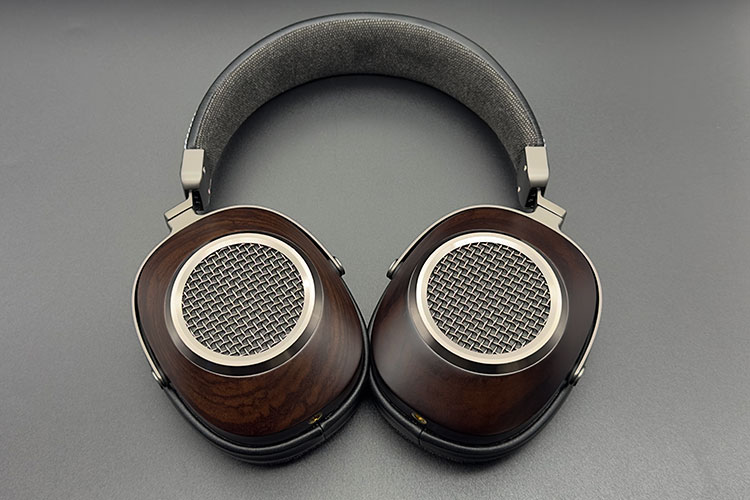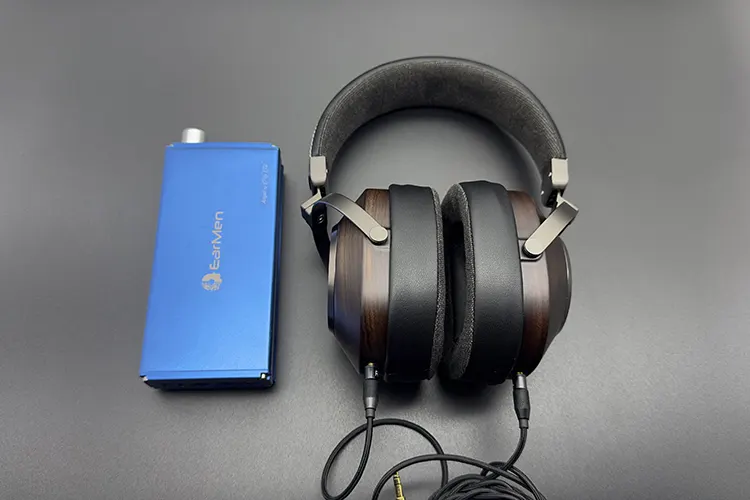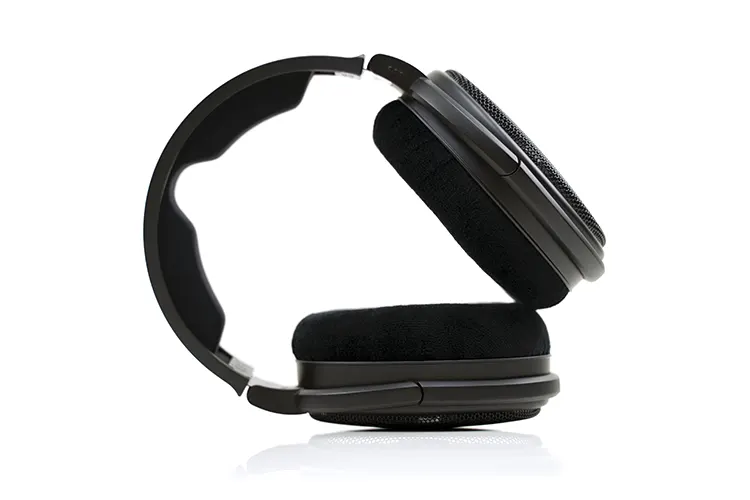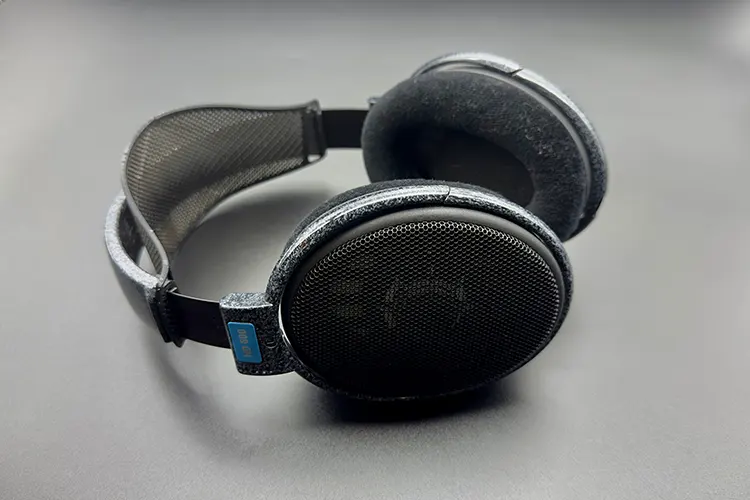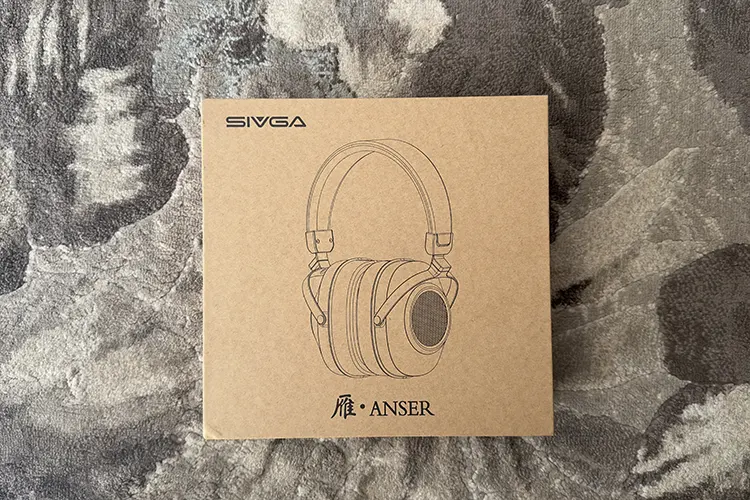Synergy
The SIVGA ANSER has an impedance of 38Ω @ 1 kHz and a sensitivity rating of 105 dB/Vrms. It is not very power-hungry and can be comfortably driven by sources with lower power output. However, with better power specifications, it does benefit, as the soundstage becomes more expansive.
To allow it to shine at its full potential, I recommend giving it some extra power. The ANSER responds well to the quality of the source, particularly in how it resolves sound. More than just power, it thrives with a high-quality source.
On the LPGT, I comfortably drive it at a volume level of 40. Few IEMs can handle this volume level easily, which is one reason I feel the ANSER is not very demanding.
The ANSER benefits from the DAP’s warmth and resolving capabilities, resulting in a lush, rich sound with pleasing warmth. The bass has a good body and texture. While the soundstage gains depth, there isn’t much improvement in width.
I also enjoyed pairing it with the Earmen Angel. This pairing sounds airier and more open compared to the LPGT, mainly because the Angel provides more power to the ANSER.
However, the resolution and detailing are not as refined. The soundstage gains some width but remains somewhat flat in depth.
The Questyle CMA18 Master, a very powerful desktop source, pairs quite well with the ANSER. With its ample power, the ANSER delivers a more expansive sound than other sources.
While I find the LPGT Touch to be more resolving than the CMA18M, the additional power of the CMA18M enhances the overall pairing experience.
One aspect I truly appreciate about the ANSER is its versatility, as it performs excellently with both lower-end and higher-end devices.
Select Comparisons
Sennheiser HD 660S2
Technical
The HD 660S2 is an open-back, over-ear headphone launched in early 2023. It is the successor to the HD 660S and features a 38mm dynamic driver.
The HD 660S2 was initially launched at a higher price in the mid-tier category but is now available at a discounted price of $350, though still higher than the ASNER.
The HD 660S2 has an impedance of 300Ω and a sensitivity rating of 104 dB/Vrms. The headphones demand a lot more power than ANSER.
I do not find the HD 660S2 pairing well with low-power-rated sources. For comparison, I paired both the headphones with the CMA18 Master for optimal output.
Design
I would not be exaggerating if I said that, when placing these two headphones side by side, most people would choose the ANSER for its design.
It’s truly satisfying to see how a budget headphone excels so much in design. Every element of the ANSER seems better built than the HD 660S2, which feels plasticky and less durable.
The wooden cups on the ANSER and the better-padded, leather-covered headband give it an edge in design.
However, the HD 660S2 has softer ear pads, which I find more skin-friendly. The pads on the HD 660S2 are slimmer, and its clamp pressure is more noticeable, so overall, I find the ANSER slightly more comfortable.
Although the HD 660S2 is lighter, the ANSER distributes its weight so effectively that both feel about the same in terms of weight.
The stock cable of the HD 660S2 connects via a two-pin system and has a 4.4mm termination, whereas the ANSER uses a 2.5mm connection and terminates in a 3.5mm jack. The ANSER’s cable is more prone to microphonics, so I prefer the cable on the HD 660S2.
Performance
Even though there is quite a gap in pricing, I didn’t find the ANSER lagging much in performance. It compares well against the HD 660S2 in almost every aspect. The HD 660S2 offers a smoother and safer presentation, while the ANSER feels more energetic. To me, the ANSER is more fun and exciting to listen to.
The bass on both headphones is satisfying. In terms of quantity, they deliver a similar level of impact, with the ANSER having slightly more emphasis in the mid-bass region.
However, with more power, the HD 660S2 produces a more impactful bass response. Additionally, the bass on the HD 660S2 feels more refined and layered.
The ANSER offers a cleaner and more detailed midrange presentation due to its upper midrange focus. In contrast, the HD 660S2 lacks a crisp, clean midrange and seems slightly colored.
The upper midrange on the HD 660S2 is quite inoffensive and lacks energy. This is particularly noticeable in female vocals, which sound airier and better extended on the ANSER.
In the treble region, the ANSER feels more extended and airier with added sparkle and slightly more detailed highs.
Both headphones have a similar soundstage, with less focus on width and a smaller holographic presentation. The HD 660S2 offers a taller soundstage with better depth, whereas the ANSER presents a flatter stage.
A notable strength of the ANSER is its resolution and clarity, which paint a vivid musical picture, an area where I had hoped the HD 660S2 would perform better but didn’t.
Overall, while the HD 660S2 offers better scalability and refinement, I love the ANSER more for its engaging and dynamic presentation.
Sennheiser HD 600
Technical
The other pair I used for comparison is the HD 600. The unit I have must be quite old, as it is the earlier marble version, which Sennheiser no longer produces. The newer versions are available at a discounted price, quite close to the ANSER.
The HD 600 has an impedance of 300Ω and a sensitivity rating of 97 dB/Vrms. Like the HD 660S2, these headphones require significantly more power than the ANSER. I don’t find them pairing well with low-powered sources.
Design
In terms of look and feel, the newer version is quite similar to the HD 660S2. It is predominantly made of plastic and doesn’t feel as well-built or robust as the ANSER.
Weighing 260g, the HD 600 feels more comfortable than the ANSER. The clamping force is moderate, but the narrow pads can put some pressure on the face during wear. The ear pads on the HD 600 are softer and more skin-friendly.
The stock cable of the HD 600 connects via a two-pin system and terminates in a 4.4mm plug, whereas the ANSER uses a 2.5mm connection and terminates in a 3.5mm jack.
Performance
The sound of the HD 600 is closer to the ANSER than to the HD 660S2. The HD 600 sounds very natural and feels more tonally accurate than the HD 660S2. Like the ANSER, its timbre is natural, and the vocals feel authentic.
In the bass, the HD 600 lacks impact and falls behind the ANSER in terms of quantity. The ANSER provides a deeper, more rumbling sub-bass and a stronger impact in the mid-bass region. The quality of bass is slightly better on the ANSER, which delivers more textured and refined bass.
Both headphones have a highly resolving midrange that feels natural. The ANSER is slightly more resolving, bringing finer details with greater authenticity. I enjoy the vocals on both.
The upper midrange on the ANSER is a bit more energetic, which can occasionally feel exaggerated. However, this region is well-tuned on the HD 600, offering detail and good extension without sharpness.
In the treble region, the ANSER is slightly more detailed, but the HD 600 is not far behind. Both offer an airy presentation and resolve higher frequencies well. The ANSER has a slight edge here, as its upper treble feels airier.
Both the ANSER and HD 600 have a similar soundstage presentation, with comparable width and depth.
My Verdict
SIVGA ANSER was a very pleasant surprise for me. It gets a lot of things right, starting with the tuning, which is full of fun and excitement. The impactful bass, coupled with a clean and natural midrange, creates a recipe for successful tuning.
The technical performance is also quite decent. It resolves nicely, though a bit more detail would be appreciated but I can’t complain much. The ANSER can be easily driven with low-powered sources, yet it scales quite well with more powerful ones.
Adding to its appeal is the beautiful design, which feels nothing short of premium. In its price range, I can hardly think of more attractive headphones.
With such excellent tuning and a premium build, the dynamic driver SIVGA ANSER has truly shaken up the budget segment. You tend to overlook the minor drawbacks when a pair of headphones offers so much at such an affordable price.
Anyone looking for headphones in this price range should consider trying the ANSER.
SIVGA ANSER Specifications
- Style Over the ear, Semi-open back
- Driver Configurations: 50mm Dynamic driver
- Frequency Response: 20 Hz – 20 kHz
- Impedance: 38Ω±1Ω
- Sensitivity: 105 dB (± 1 dB) @1kHz
- Weight: 342 g
- Cable: 3.5mm Termination, 2M +/- 0.2M

